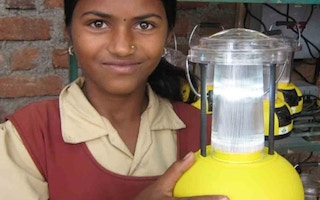India’s rush for industrialisation may be stymied by a lack of power for its factories, but, barely noticed, solar electricity is being taken to thousands of villages in one of the most ambitious grassroots projects ever attempted.
Five years ago an estimated 400 million people lived with rudimentary, low-quality kerosene lamps, providing poor, polluting and often dangerous light. A further 100m homes were nominally connected to the grid but had intermittent power, often at times when no one wanted it.
But in five years, thanks largely to a single NGO that has not sold one lamp, 500,000 more homes have been provided with cheap, decentralised electricity via powerful solar LED lanterns using the latest batteries and panels.
Teri, India’s leading energy research institute, launched its Lighting One Billion Lives initiative in 2007. After a slow start – only four villages signed up in the first year – it has taken off. More than 2,000 villages now have “charging stations”, each offering 50 or so long-lasting, high-quality solar lanterns that double up as mobile phone chargers.
Teri does not make, distribute or sell the lamps. Instead, it acts as a combined social, developmental and technical enterprise. Its scientists and designers work closely with more than 20 manufacturers to improve the quality and reliability of the lamps, and bring down their cost, while other teams work with villages, NGOs and banks to identify people to run the charging stations. Teri helps to set up repair shops, trains people and provides technical support.
Click here to read the full story.

















